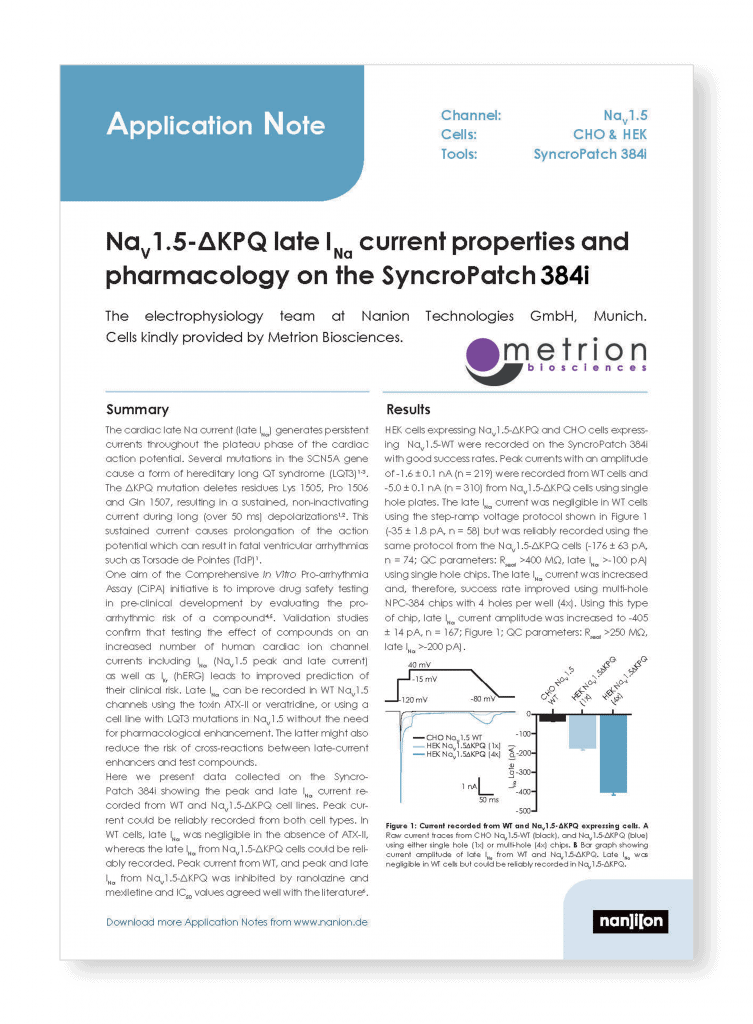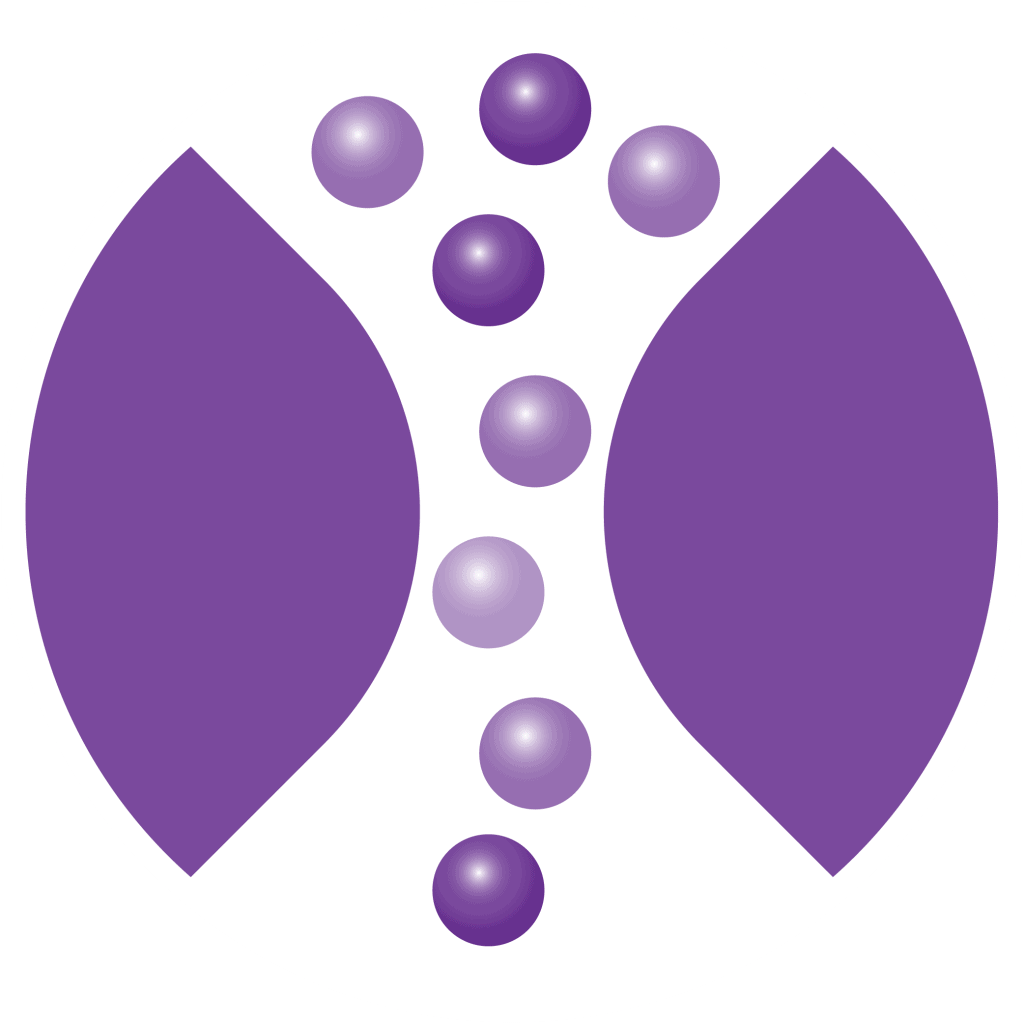NaV1.5-ΔKPQ late INa current properties and pharmacology on the SyncroPatch 384i

Application note
Application note title
NaV1.5-ΔKPQ late INa current properties and pharmacology on the SyncroPatch 384i
Summary
One aim of the Comprehensive In Vitro Proarrhythmia Assay (CiPA) initiative is to improve drug safety testing in pre-clinical development by evaluating the proarrhythmic risk of a compound. Validation studies confirm that testing the effect of compounds on an increased number of human cardiac ion channel currents including INa (NaV1.5 peak and late current) as well as IKr (hERG) leads to improved prediction of their clinical risk.
Please contact us if you would like any further information regarding our suite of cardiac safety screening services or CiPA screening services.
Extract
Introduction
The cardiac late Na current (late INa) generates persistent currents throughout the plateau phase of the cardiac action potential. Several mutations in the SCN5A gene cause a form of hereditary long QT syndrome (LQT3)1-3. The ΔKPQ mutation deletes residues Lys 1505, Pro 1506 and Gln 1507, resulting in a sustained, non-inactivating current during long (over 50 ms) depolarizations1,2. This sustained current causes prolongation of the action potential which can result in fatal ventricular arrhythmias such as Torsade de Pointes (TdP)1.
One aim of the Comprehensive In Vitro Proarrhythmia Assay (CiPA) initiative is to improve drug safety testing in pre-clinical development by evaluating the proarrhythmic risk of a compound4,5. Validation studies confirm that testing the effect of compounds on an increased number of human cardiac ion channel currents including INa (NaV1.5 peak and late current) as well as IKr (hERG) leads to improved prediction of their clinical risk. Late INa can be recorded in WT NaV1.5 channels using the toxin ATX-II or veratridine, or using a cell line with LQT3 mutations in NaV1.5 without the need for pharmacological enhancement. The latter might also reduce the risk of cross-reactions between late-current enhancers and test compounds.
Other recommended publications


Let’s work together
What are your specific ion channel and assay needs?
If you have any questions or would like to discuss your specific assay requirements, we will put you directly in touch with a member of our scientific team. Contact us today to discover more.
